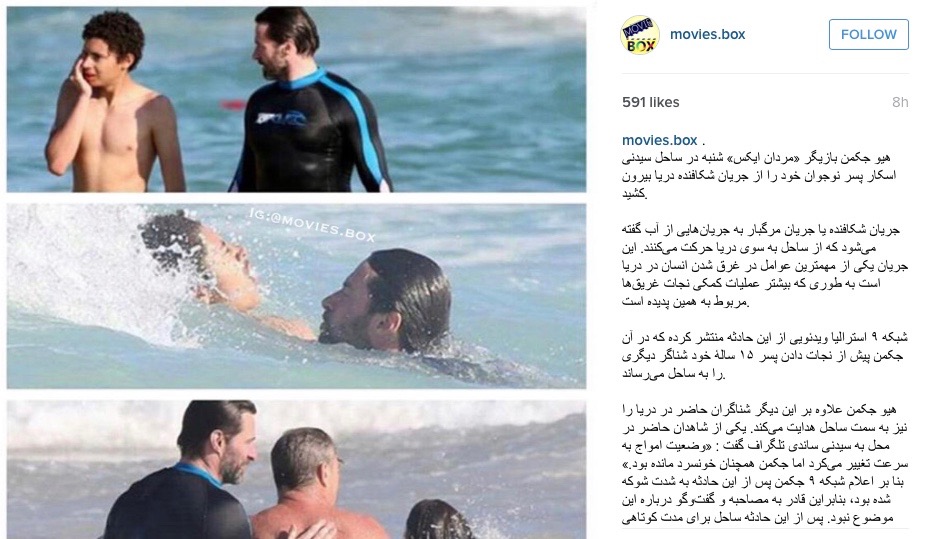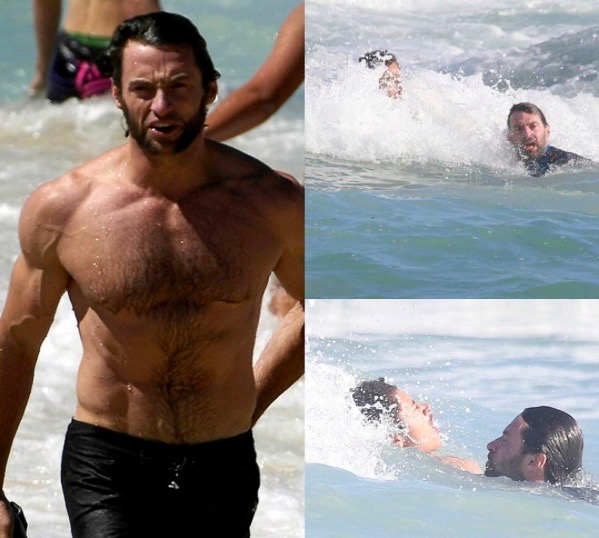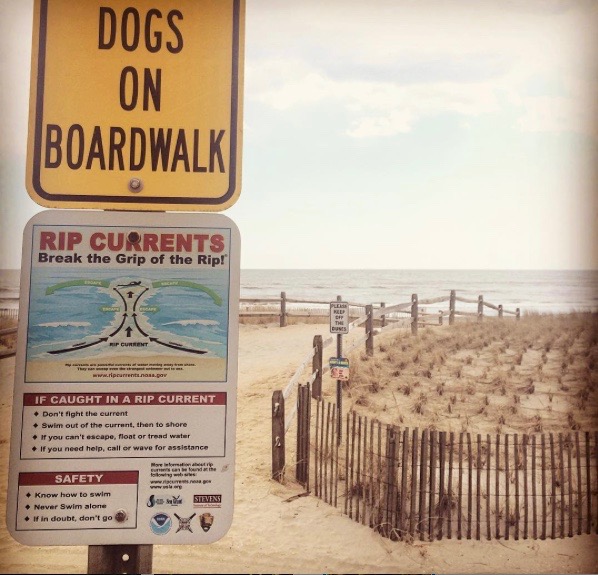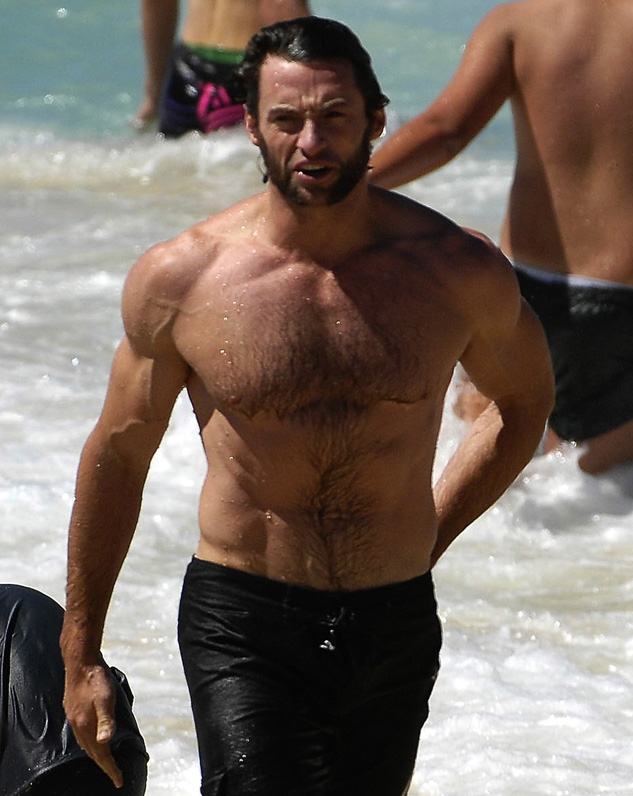
Hugh Jackman, aside from being one of the sexiest human beings of the male persuasion on the face of the earth, also has a reputation for being one of the nicest guys in Hollywood. This week, we can safely add real-life superhero to his ever-growing list of attributes.
Jackman was at Bondi Beach in his native Sydney, Australia over the holiday weekend when a sudden riptide caught swimmers out. Jackman’s 15 year-old son Oscar and 10 year-old daughter Ava were both swept up in the rip tide (along with many others) and, and were struggling to stay afloat. The actor, along with a few other beachgoers, joined forces to save the struggling children and surrounding swimmers. The Australian TV station 9 News covered the story.
The actor launched into action himself at the Sydney beach yesterday, when his 10-year-old daughter Ava and 15-year-old son Oscar became caught in a rip.
Swimmer Peter Adam lent a hand, grabbing Ava and then linking hands with Jackman to pull her to safety

Apparently in the immediate aftermath of the event, Jackman was understandably too shaken-up to talk to the press. However, a few of the people who selflessly helped Jackman in his efforts did give a statement. A beachgoer named Peter Adam had this to say to 9 News.
His daughter was struggling to get on to the sand bar so I reached down, grabbed her arm and put my arm up to Hugh to make a chain to pull us up on the sand bar,” he said.
That’s what you do with any family out there.
Another beachgoer, a personal trainer named Dan Conn, also spoke to 9 News and gave a brief account of what happened.
His daughter was struggling to get on to the sand bar so I reached down, grabbed her arm and put my arm up to Hugh to make a chain to pull us up on the sand bar. I think he was under a bit of pressure with the two kids at once but he was pretty cool, calm and collected, as Hugh always is I suppose.
Conn went on to describe Jackman as “definitely a bit of a superdad, superhero, and he’s a super bloke too.”
At the risk of straying off the storyline for just a moment, I think that it’s important to pause for a moment and let you, the reading audience, see a photograph of Mr. Conn, the personal trainer. You can thank me later.

See what I’m sayin’? Now shut your eyes and imagine This fine piece of work and Jackman linking arms, waist-deep in balmy oceanic waters, looking rugged and heroic. I’m pretty sure that had I been there on the day and witnessed that sight, I would have purposely cast myself into the sea.

But I digress.
what actually happened, despite it having been reported as a “rip tide”, actually sounds more like a rip current, which is a slightly different thing. For you landlubbers, you may not be familiar with just what a rip tide or a rip current is. In the interest of raising awareness of personal beaching safety (summer is just around the corner), I will supply you with the basics. The “official” definition (if you want to count Wikipedia as the “official” version of anything”) of a rip current is as follows:
A rip current, commonly referred to simply as a rip, or by the misnomer “rip tide”, is one specific kind of water current that can be found near beaches. It is a strong, localized, and rather narrow current of water. It is strongest near the surface of the water, and it moves directly away from the shore, cutting through the lines of breaking waves.
A rip current forms because breaking waves push water towards the land. Water that has been pushed up near the beach flows together (as feeder currents), and this water finds a place where it can flow back out to sea. The water then flows out at a right angle to the beach in a tight current called the “neck” of the rip, where the flow is most rapid. When the water in the rip current reaches outside of the lines of breaking waves, the flow loses power, and dissipates in what is known as the “head” of the rip. Sometimes tendrils of left-over current then actually curve back towards the shore.
Rip currents can be hazardous to people who are in the water. Swimmers or floaters who are caught in a rip and who do not understand what is going on, may not have the necessary water skills, may panic, or may exhaust themselves by trying to swim directly against the flow of water. Because of these factors, rips are the leading cause of rescues by lifeguards at beaches, and in the US rips are responsible for an average of 46 deaths from drowning each year.










